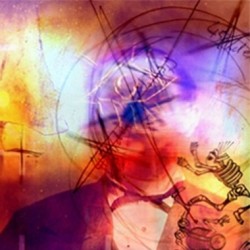By Helen Figueira
February 6, 2013
Time to read: 3 minutes
 Recognising a new form of schizophrenia
Recognising a new form of schizophrenia
1 in 100 people will at some point be affected by schizophrenia – a debilitating mental condition that alters the mind, generating uncomfortable feelings and unpredictable behaviours. Although conventional treatments are largely effective, for one third of patients they bring no relief from symptoms at all. New research from the CSC reveals why: these patients have an altogether different, previously unrecognised, form of schizophrenia.
“It has been accepted for a while that dopamine underlies psychosis,” says Oliver Howes (Psychiatric Imaging), who led the study published in The American Journal of Psychiatry. “We’ve recently shown that more specifically the problem lies in excess synthesis and release. Standard treatment blocks the dopamine system, but we’ve forgotten about the group of patients that don’t improve at all with this approach.” Using PET brain scans, Howes’ team compared the dopamine systems of healthy volunteers, patients who have responded well to dopamine-blocking treatment, and patients who appear immune to these therapies.
“Until now, no one had ever looked to see if the treatment-resistant patients have the same sort of dopamine abnormalities,” remarks Howes. “And in this study, we’re struck by the fact that they don’t. Their dopamine systems are akin to those of healthy people.” This revelation means that something else must be causing the disease.
“The implication is there are two separate illnesses. That’s a game-changer, “admits Howes. “We should now be thinking of types of schizophrenias, not just one single schizophrenia with a set pathophysiology,”. This could give hope to those who have had to endure a cocktail of ineffective treatments, while struggling to cope with the devastating effects of the disease.
Identifying this disease type paves the way for research into alternative treatments. Howes and his colleagues are now looking into early diagnostic tests to identify schizophrenia types so that patients can be fast tracked to the right treatment, potentially saving patients from unsuitable therapy, and leading them to a more effective alternative. Initial investigations suggest that in patients with a normal dopamine profile glutamate might be responsible for upsetting the delicate neural balance. Identifying new treatment targets could lead to new drugs to provide respite for patients not previously treated by available medication.
As well as shining a light on new underlying disease pathologies, the study reveals important information for patients who do respond well to dopamine-based treatments. “Although they improve, and feel better, their pathophysiology doesn’t change,” confirms Howes. Current therapies temporarily dampen the disease, but do nothing to alter their underlying neural profiles, and with time their dopamine systems regress to the overactive prior state. Over 85% of patients relapse within a year of stopping medication. Howes may have hit upon the reason why.
In both its underlying biology and physical manifestation as devastating symptoms, schizophrenia is a complex disease. This research is unpicking the details, and providing hope for patients – no matter which type of schizophrenia they have.
Reference:
Demjaha, A., Murray, R. M., McGuire, P. K., Kapur, S., Howes, O. D., (2012). Dopamine synthesis capacity in patients with Treatment-Resistant schizophrenia. The American journal of psychiatry. Abstract
Image Credit: ‘decline into mental illness’ -Available under Creative Commons, courtesy Chris Nurse, Wellcome Images
AL